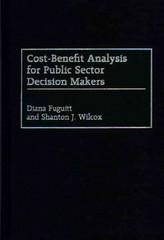Question
P2-2 (Transaction Analysis) a. Analyze the effects of the following transactions on the accounting equations of the various funds and nonfund accounts of a state
P2-2 (Transaction Analysis) a. Analyze the effects of the following transactions on the accounting equations of the various funds and nonfund accounts of a state or local government. (For any borrowing transactions, reflect any necessary year end interest accruals in your responses.) b. Indicate how each transaction would be reported in the operating statement for each fund affected. Be sure to identify the fund and the operating statement. 1. A government incurred and paid salaries for general government employees, $500,000. 2. A government purchased a truck for $38,000 cash for the use of a general government department that is financed from restricted taxes that can be used only to support that department?s programs. 3. A government issued $5,000,000 of 6%, 10-year bonds to help finance expansion of a facility used by one of its public utility operations.The bonds were issued at par 3 months before year end and pay interest annually. 4. A government issued a 9-month, 10% note payable for $50,000. The note was issued 6 months before the end of the fiscal year to provide financing for various programs that are financed primarily from general tax revenues. 5. A government issued general obligation bonds at par, $15,000,000, to finance construction of a new school building. The bonds bear interest at 8%, payable annually, and were dated and issued 6 months before the end of the year. 6. The government purchased land for the site of the school, $185,000. 7. The government incurred and paid construction costs on the school building, which was completed during the year, $14,715,000. 8. The government?s governing body ordered that the unused school bond proceeds be set aside for paying principal and interest on the bonds, and those resources were set aside in the appropriate fund. 9. $1,500,000 of general tax revenues were paid over to the fund to be used to pay principal and interest on the school bonds. 10. The first annual interest payment on the school bonds came due and was paid. 11. The 9-month note (from item 4) was repaid with interest when due. 12. The government-owned public utility sold services to the public on account, $1,000,000; no uncollectibles are expected. 13. The government-owned public utility sold services to other departments of the government, $110,000.The other departments have paid all but $10,000. 14. The government sold a police department computer for $4,000. Its original cost (3 years earlier) was $15,000. At the time of purchase the computer was expected to be used for 4 years and have a $7,000 residual value. 15. The government paid $100,000 principal and $10,000 interest on a long-term note that came due midway through the year. 
Step by Step Solution
There are 3 Steps involved in it
Step: 1

Get Instant Access to Expert-Tailored Solutions
See step-by-step solutions with expert insights and AI powered tools for academic success
Step: 2

Step: 3

Ace Your Homework with AI
Get the answers you need in no time with our AI-driven, step-by-step assistance
Get Started


